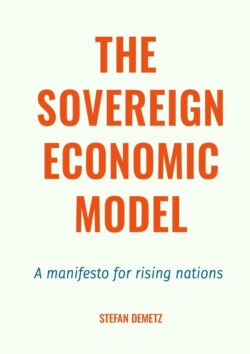Читать книгу The Sovereign Economic Model. A manifesto for rising nations - Stefan Demetz - Страница 15
Economics of the sovereign economic model
Sovereign Economic Margins
ОглавлениеLet us suppose a carmaker in Country 1 that produces and sells a cool million units of $100,000 cars. It has produced $100 billion in products. As a finished good, this number will count toward GDP. Consider two scenarios:
1. All suppliers are building all of the vehicles’ parts in the country, but said business activity is not included in GDP calculations because it is the last stage of production.
2. All suppliers’ parts are built in another country, so the production of cars is counted in Country 1 as $100 billion of GDP and the suppliers’ business is counted as $70 billion of GDP in Country 2 because it is the last stage of production in that country.
In Scenario 1, $100 billion is counted, all-inclusive, while in Scenario 2, $100 billion is counted for Country 1 and $70 billion is counted for Country 2, a total of $170 billion.
What happened in reality? In Country 1, $30 billion of wealth was created; in Country 2, $70 billion was created. So Country 1 was credited with $100 billion of GDP, but only created $30 billion of wealth. In fact, Country 2 produced 70 percent of the wealth, more than double that of Country 1.
The Sovereign Economic Model prefers to focus on wealth creation and not just meaningless GDP numbers. This concept can be called the sovereign economic margin. That is why, with industrialization and import substitution policies, wealth is created. It happens with the production of final goods and the sub-production of intermediate goods or parts within a country. Anything built in another country and imported is wealth for the producing foreign country. Employment is wealth. Employment implies the use of labor for useful productive activities, so the more productive workers, the more wealth creation increases. Evidently, not all employment means doing productive tasks; some types even destroy wealth, such as in these cases:
• The cost of employment is higher than the wealth produced (e.g., communism).
• Bureaucracy is slowing down wealth creation.
• Wealth is offset by productive activities with high adverse social costs.
As with any other improvement process, the reduction of defects, i.e., unproductive economic activities, is a significant step in the right direction.
